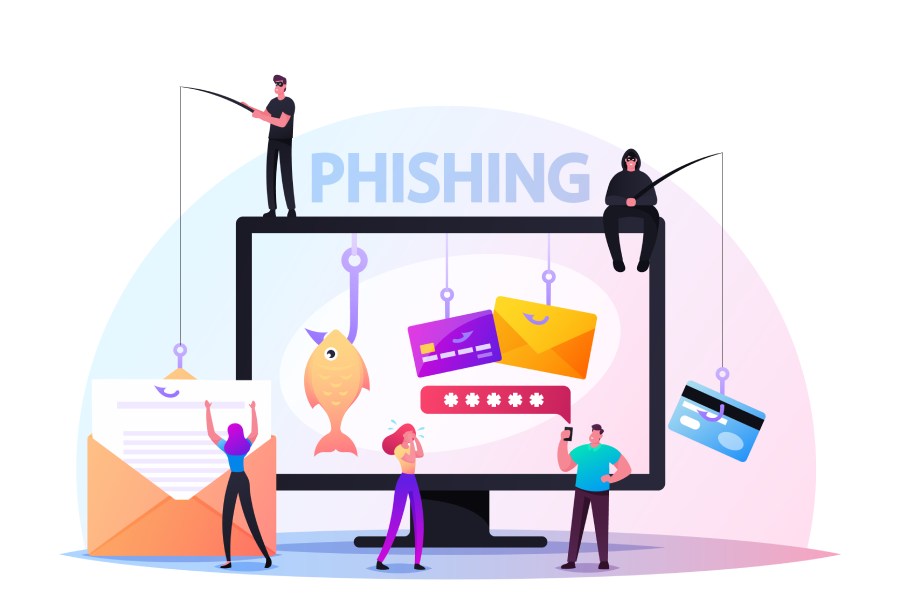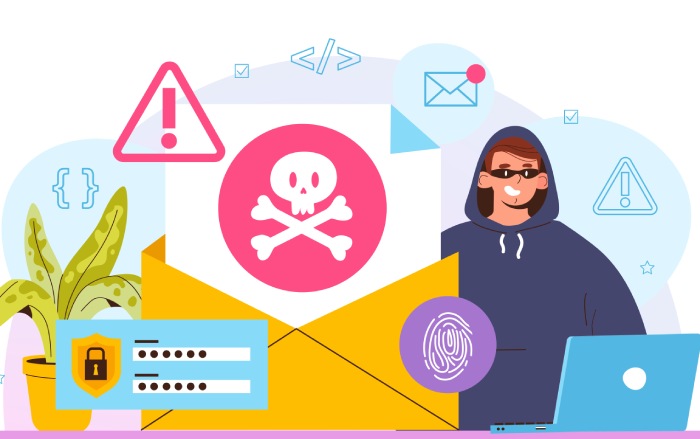Phishing attacks follow five key steps. Effective cybersecurity prevents them at each one.
“I’d never fall for that.”
“It’ll never happen to me.”
“They’re not interested in companies like ours.”
Almost every cybercrime victim has said words like these at one time or another. Anyone who believes that they, their company, or their colleagues are too street-smart to be victimized by cyber attacks doesn’t know just how sophisticated these attacks can be.
In the early days of the Internet, phishing and other email scams were easy to spot. Bad spelling, extraordinary promises, and obvious requests for sensitive information led many to a false sense of security – but cybercrime has become a $1.5 trillion industry and shows no signs of slowing down.
The security landscape has become a full-on “arms race” between cybercriminals coming up with better, more creative exploits and cybersecurity professionals working tirelessly to patch vulnerabilities and inform users of best practices. Email phishing stands at the very center of the storm because it is still the number-one attack vector that cybercriminals use worldwide.
But if you know how phishing attacks work, you can implement strategies for beating cybercriminals at their own game every step of the way. To do this, you need to know what steps they take to gain access to your private data and login credentials.
The Typical Phishing Attack Deconstructed
In the past, phishing attacks required little more than a fake log-in page and a directory of email addresses. Any cybercriminal could purchase an email list and fake a common page to see how many credentials they can catch.
Surprisingly, this approach is still pretty effective. A 2015 report by BBC found that phishing scams caught their first victims in mere minutes. However, the very latest exploits are much more advanced – from malicious browser ads to tech support scams, the cybercrime industry is placing a high priority on what legitimate businesses would call process development.
Here’s how a typical phishing scenario works in real life:
- In order to fake a convincing story, cybercriminals need to do their research. They will look victims up on social media and use whatever personal information they find to make their ruse believable. It only takes a few minutes per victim, and the potential rewards are ready for picking up.
- Once a cybercriminal finds some information they can work with, it’s preparation time. This may mean setting up a false email to impersonate your boss, or it could be creating a fake login page for an e-commerce platform that you use.
- Email blast. Once all of the pieces are in place, the cybercriminal sends an email blast to all potential victims. Automated email services make it easy to send personalized messages to dozens or hundreds of victims at once.
- The click. Recipients open the emails and click on bad links or open malicious attachments. Malicious executives unfold and begin compromising personal data – the attack is now fully underway.
- The exploit. Depending on the type of attack in question, this can mean activating ransomware, sending login credentials to cybercriminals, or moving through your network to find key data to exfiltrate.
At this point, the attacker is free to move through your systems and obtain any information he or she wants. The ultimate goal could be obtaining financial records, compromising business emails, committing identity theft, or directly pilfering company bank accounts.
The only way you can save yourself is by quarantining the affected workstations and devices, locking them up so that they don’t communicate with the rest of your network.
How to protect your organization from Phishing attacks
There are multiple methods you can use to protect yourself from cybercrime, and you should invest in a robust multi-layered defense. Over-reliance on any single solution will lead to dangerous situations where a single failure point can compromise the entire network.
For instance, while training employees to identify phishing emails can be highly effective, it can’t guarantee 100% protection. A Columbia University experiment found that out of 2,000 phishing emails sent to students and faculty, 366 opened the emails and exposed themselves to the “attack”.
But many victims didn’t learn their lesson even after being warned. Subsequent phishing attempts still produced victims. It was only after four “rounds” that none of the original victims took the bait.
This means that holding routine phishing drills can be effective, but that relying only on them can be disastrous. All it takes is a single mistake and your entire network could be compromised. And mistakes do happen. Even the best-trained cybersecurity professionals in the industry can make them.
The only way to ensure that all of your email accounts are safe is to stop phishing emails from arriving in the inbox in the first place. Your filtering and click protection solutions should be preventing all but the most sophisticated attacks from the outset – otherwise, it is only a matter of time before someone slips up.
Invest in Multi-Layered Defence Systems
The ideal security framework features multiple layers of defense. It combines email filtering and click protection to prevent the vast majority of malicious emails from ever entering your inbox and then incorporates strategies for quarantining infected systems if an attack makes it through.
Anti-virus software is just one element of this kind of comprehensive defense. Regular system backups and disaster recovery solutions are another element. The combination of all of these disparate elements under a single, unified security framework creates results that ensure that your company’s data always remains in safe hands.
Preventing phishing attacks at the research and preparation phases is key. A professional email security client can become the walls of the fortress that determines whether your company falls victim to cyberattack or not.
Filtering will keep the worst offenders out of your employees’ inboxes. Click protection can verify that incoming links actually lead to the websites they appear to point to, and redirect traffic away from suspicious ones. Together, these two technologies form the foundation of DuoCircle’s Advanced Threat Defense phishing protection solution, which also includes protection against domain name spoofing and zero-day ransomware vulnerabilities.



